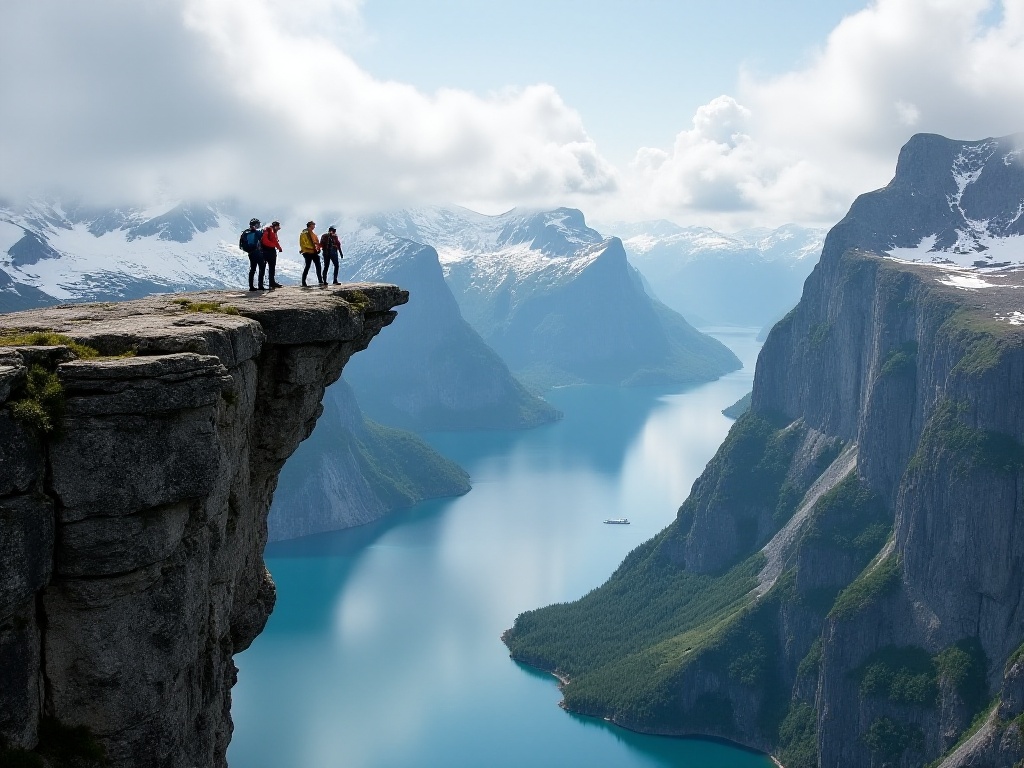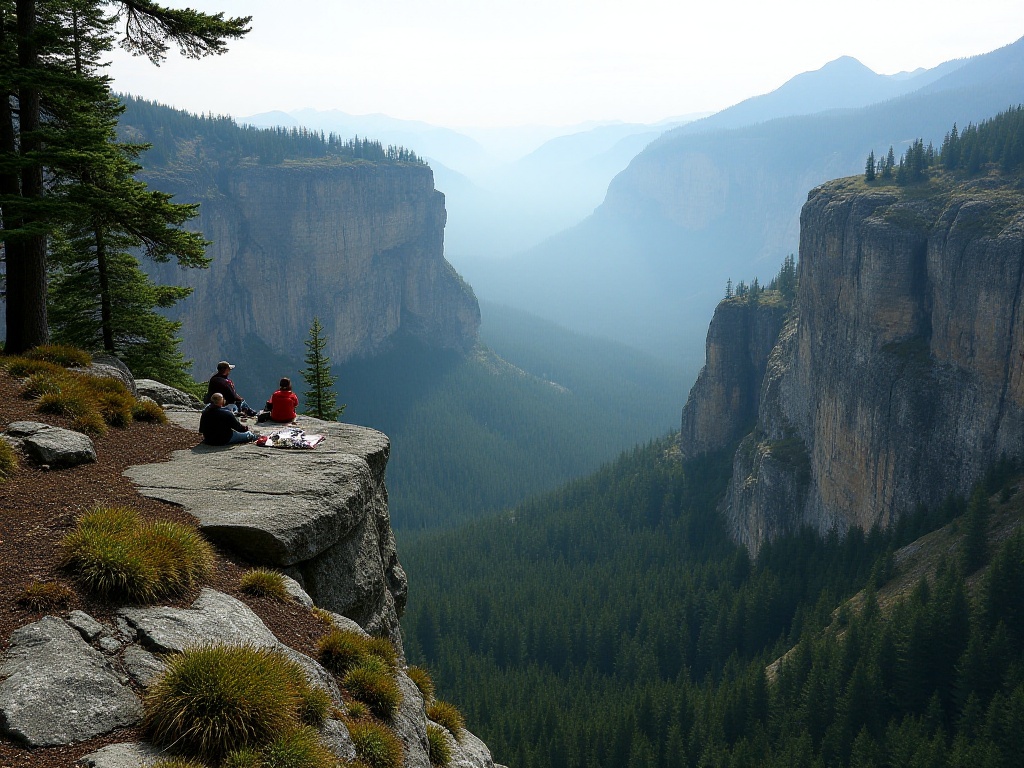Origins
Have you ever imagined a hiking trail on Earth where you walk between volcanoes and glaciers, with thousand-year-old lava fields beneath your feet and snow-covered glacier walls above? This is the Laugavegur Trail in Iceland's southern highlands.
As a traveler who has hiked many trails around the world, I must say that Laugavegur left the deepest impression on me. This 52.9-kilometer hiking trail not only showcased Iceland's unique topography but also made me deeply appreciate nature's masterful work.
Highlights
The most captivating aspect of the Laugavegur trek is its topographical diversity. The trail crosses Iceland's southern highlands, encompassing several of Iceland's most representative landscapes.
Starting from Landmannalaugar, you first encounter colorful rhyolite mountains. These mountains display various colors including red, yellow, green, and purple, as if God had spilled a palette of colors. I remember being incredulous when I first saw this landscape, hardly believing it was naturally formed.
Then you traverse vast lava fields. Black lava rocks cover the ground, requiring careful navigation. These lava formations were created by volcanic eruptions hundreds of years ago and maintain their original forms. I saw many peculiar lava structures here, some resembling waves, others like ropes, making one marvel at nature's wonders.
Season
Based on my experience, timing is crucial for the perfect Laugavegur trek. The best hiking period is from late June to early September. During this time, temperatures are relatively mild and rainfall is less frequent.
I recommend starting in mid-July. During Iceland's peak summer, daylight lasts over 20 hours, eliminating concerns about darkness while hiking. Temperatures ranging from 10-15℃ are ideal for hiking.
However, even during the best season, Iceland's weather is changeable. I once experienced sunny, cloudy, rainy, and foggy conditions all in one day. Therefore, I recommend carrying rain gear and constantly monitoring weather forecasts.
Equipment
Regarding equipment, this is a major topic. Based on my personal experience, here are some essential items:
Waterproof hiking boots are crucial. The trail crosses many streams, and regular sneakers easily get wet. I used Gore-Tex waterproof hiking boots, which kept my feet dry for all four days.
Waterproof jackets and pants are essential. Iceland's weather is unpredictable, and sudden rain can catch you off guard. I suggest choosing breathable three-layer Gore-Tex materials.
Bring sufficient warm clothing. Even in summer, temperatures can drop below 0℃. I usually carry a fleece jacket and a down jacket, which are especially useful when resting in mountain huts at night.
Route
The Laugavegur trek typically takes 3-4 days to complete, divided into the following sections:
Day 1: Landmannalaugar to Hrafntinnusker Distance: 12 kilometers Elevation change: +470 meters Estimated time: 4-5 hours
This is the most challenging section. The trail begins with continuous uphill climbing and crosses several snow fields. But the scenery is absolutely worth it, with colorful mountains contrasting sharply with black lava formations.
Day 2: Hrafntinnusker to Álftavatn Distance: 12 kilometers Elevation change: -490 meters Estimated time: 4-5 hours
This section is mostly downhill with open views of distant glaciers and volcanoes. Several stream crossings require water shoes.
Day 3: Álftavatn to Emstrur Distance: 15 kilometers Elevation change: -40 meters Estimated time: 6-7 hours
This section has relatively flat terrain, but includes a 2-kilometer black desert crossing. Goggles and masks are recommended on windy days.
Day 4: Emstrur to Þórsmörk Distance: 15 kilometers Elevation change: -300 meters Estimated time: 6-7 hours
The final day is relatively easy but involves crossing several larger rivers. You can see the famous Eyjafjallajökull ice cap, under which lies the famous volcano that erupted in 2010.
Accommodation
Multiple mountain huts are available along the Laugavegur trail. Though basic, they provide essential accommodation. Advance booking is recommended as they often fill up during peak season.
Here are the details for each hut:
Landmannalaugar Hut: Beds: 78 Facilities: Kitchen, showers (paid), toilets Price: About 9000 ISK/night
Hrafntinnusker Hut: Beds: 52 Facilities: Basic kitchen, toilets Price: About 8000 ISK/night
Álftavatn Hut: Beds: 72 Facilities: Kitchen, showers (paid), toilets Price: About 8500 ISK/night
Emstrur Hut: Beds: 60 Facilities: Kitchen, showers (paid), toilets Price: About 8500 ISK/night
Food and Water
Regarding food and water, this might be the simplest part. Stream water along the route is excellent quality and safe to drink directly. However, I still recommend bringing a portable water filter just in case.
For food, since you need to carry everything yourself, I recommend lightweight, high-energy foods:
Energy bars: At least 2-3 per day Chocolate: Good for energy boosts Dried fruits: Lightweight and nutritious Instant noodles: Easy to prepare in mountain huts Canned food: Bring 1-2 for emergencies
Safety
Safety is always the most important aspect of hiking. For the Laugavegur trek, several points deserve special attention:
Weather changes: Iceland's weather changes rapidly, so always monitor weather forecasts. I used yr.no, a Norwegian weather website, which provides quite accurate forecasts.
Stream crossings: Some streams have strong currents. Use hiking poles for stability. If water levels are too high, take detours rather than risking crossing.
Risk of getting lost: Although trail markers are clear, it's easy to lose direction in heavy fog. Carry GPS equipment and download offline maps.
Costs
Finally, let's discuss the costs of this trek. Here's my personal experience (2023 prices):
Transportation: - Bus from Reykjavík to Landmannalaugar: About 9000 ISK - Bus from Þórsmörk back to Reykjavík: About 8000 ISK
Accommodation: - Mountain huts: About 8000-9000 ISK per night - Camping: About 2000 ISK per night
Equipment rental (if needed): - Tent: About 3000 ISK/day - Sleeping bag: About 2000 ISK/day - Stove: About 1000 ISK/day
Food: - Self-brought food: About 15000 ISK (4 days)
Total: For one person completing the 4-day trek staying in mountain huts, approximately 60000-70000 ISK (about 400-470 USD).
Reflections
After completing the Laugavegur trek, my greatest takeaway was a deep reverence for nature. Here, you can profoundly experience Earth's power: volcanic eruptions shaped unique landscapes, while glacial movements carved magnificent canyons.
This trail taught me that sometimes the most beautiful scenery isn't at the destination but along the way. Those moments of overcoming challenges with teammates and watching sunsets alone have become my most precious memories.
Do you have similar hiking experiences? Or is there anything else you'd like to know about the Laugavegur trek? Feel free to comment below and let's discuss.







